June 29, 2022
Julia Gillen
I’ve been fortunate in the last couple of months to gain insights into endeavours that share with our project an interest in bridging primary literacy research and practice.
On 3rd May I attended a virtual event coordinated by Dr Shelley Stagg Peterson of the University of Toronto and hosted by Dr Rachel Heydon, Western University, Canada, entitled, “Building Bridges between Literacy Research and Practice: diverse perspectives.” I thought this an extremely worthwhile, inspirational and rich event and so quote its description:
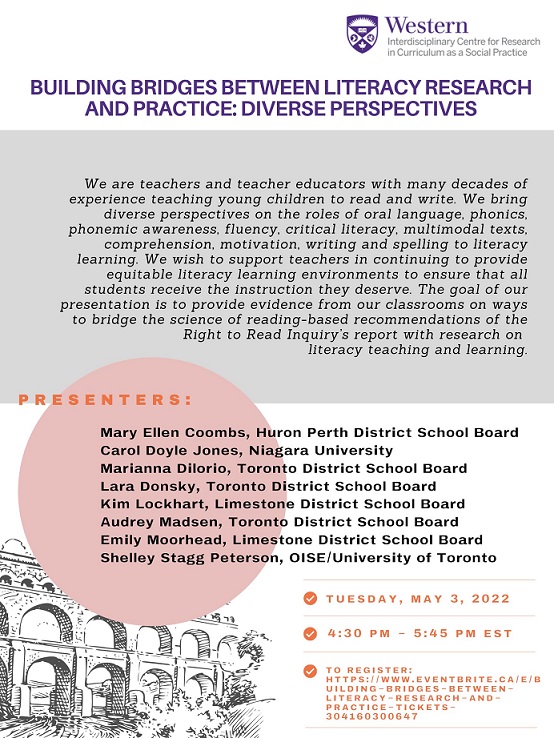
“We are teachers and teacher educators with many decades of experience teaching young children to read and write. We bring diverse perspectives on the roles of oral language, phonics, phonemic awareness, fluency, critical literacy, multimodal texts, comprehension, motivation, writing and spelling to literacy learning. We wish to support teachers in continuing to provide equitable literacy learning environments to ensure that all students receive the instruction they deserve. The goal of our presentation is to provide evidence from our classrooms on ways to bridge the science of reading-based recommendations of the Right to Read Inquiry’s report with research on literacy teaching and learning.”
It is beyond my scope here to discuss in any depth Ontario’s Right to Read Inquiry which can be found here. Perhaps unusually, policy on literacy instruction is here framed as a human rights issue, stemming from a finding/allegation that “Ontario’s public education system is failing students with reading disabilities (such as dyslexia) and many others, by not using evidence based approaches to teach them to read.” I suspect that it will not come as a surprise to some with familiarity of literacy research policy in North America, England and some other places to learn that Western University’s proposal of “diverse perspectives” is therefore felt by some in that very construction to be contentious. But personally I found the presentations at the event, while diverse, not necessarily incommensurable. It was refreshing and interesting to hear two teachers explain how adopting new strategies had assisted them to support all learning readers in their class group. But it was also fruitful to hear other reflections that took perhaps broader lenses, whether for example a holistic take on wellbeing, or a social justice orientation that incorporated respect for multilingualism and a critical approach to texts.
In June I was extremely fortunate to travel to the University of Stavanger, Norway, as part of the Critical Literacies and Awareness in Education – phase 2 “Thinking Critically Together,” funded by Erasmus+. This project is focussed on developing how criticality can be materialised in practice especially working with children aged 10-15 years. Again, I can’t go into this project here in any detail but would like to mention two things I learnt from visiting neighbouring, connected schools in a small town. The entire town is served by one primary and one lower secondary school.
The Norwegian ethos is that everybody in the town attends the same school; there is no differentiation owing to social class/wealth, religion, dis/ability etc. That is, there is a drive towards inclusion at all points if at all possible. The policy attitude pervades all sorts of attitudes in the community; if for example somebody wants to build a new house in the surrounding countryside, they can only do this if the municipality agrees that existing school buses can serve it. Recently there has been controversy in Norwegian media over a new theme park which introduced a “fast lane” as it is considered by many very undesirable that wealth should allow an individual to skip a queue. Norway is very prosperous, I know, but I still found a great deal to appreciate and learn from in terms of its culture, and although I’m not reporting on data from that project here, I can say that I was delighted to witness environments apparently fostering a love of reading.
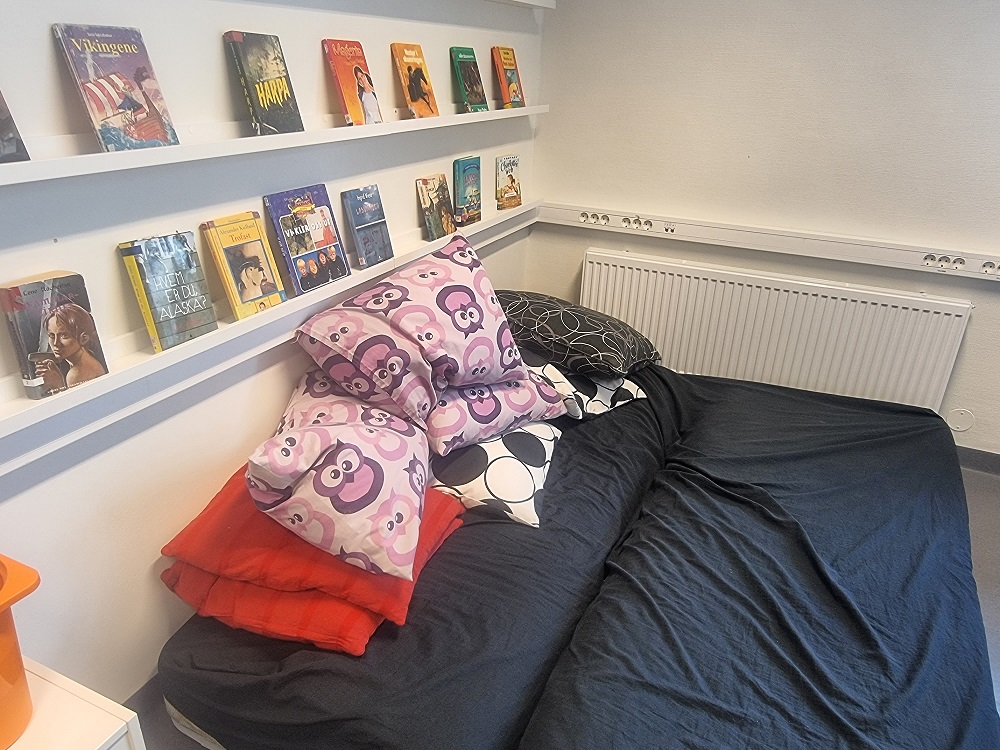
(Image by Julia Gillen)
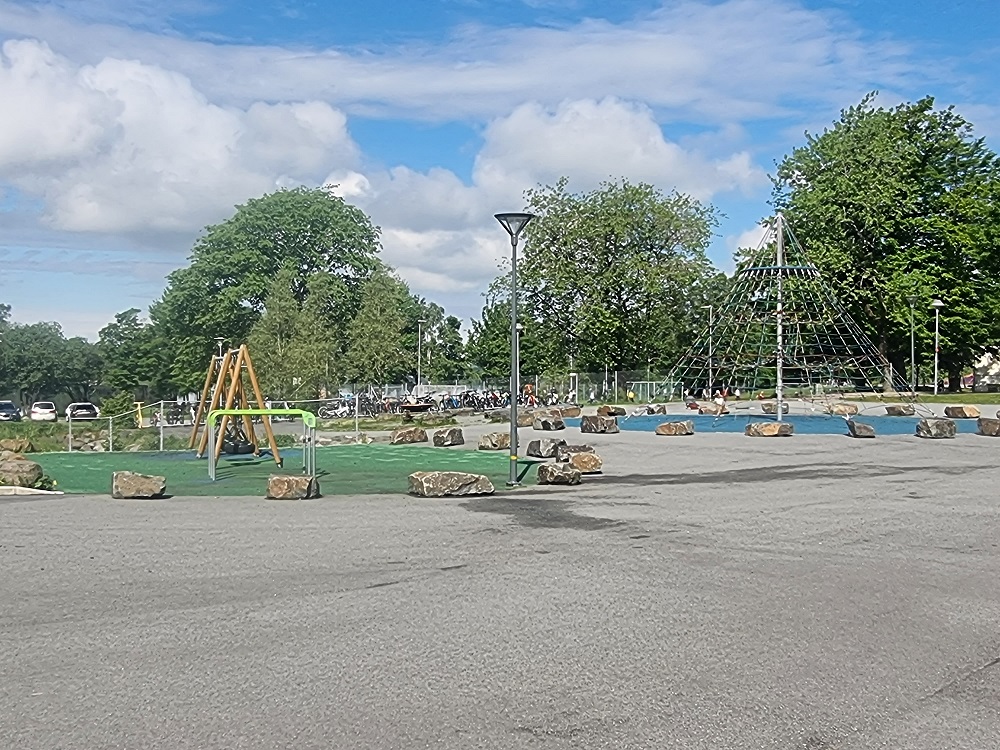
(not divided from the public road)
(Image by Julia Gillen)
Finally, I found that each municipality (local region) is involved in bridging literacy research and practice, employing educationalists who provide continuing professional development, and themselves cooperate with their local university and the schools’ leadership teams and teachers.
Heidi Kjærland told me about her own practices in working with 12-13 year old children:
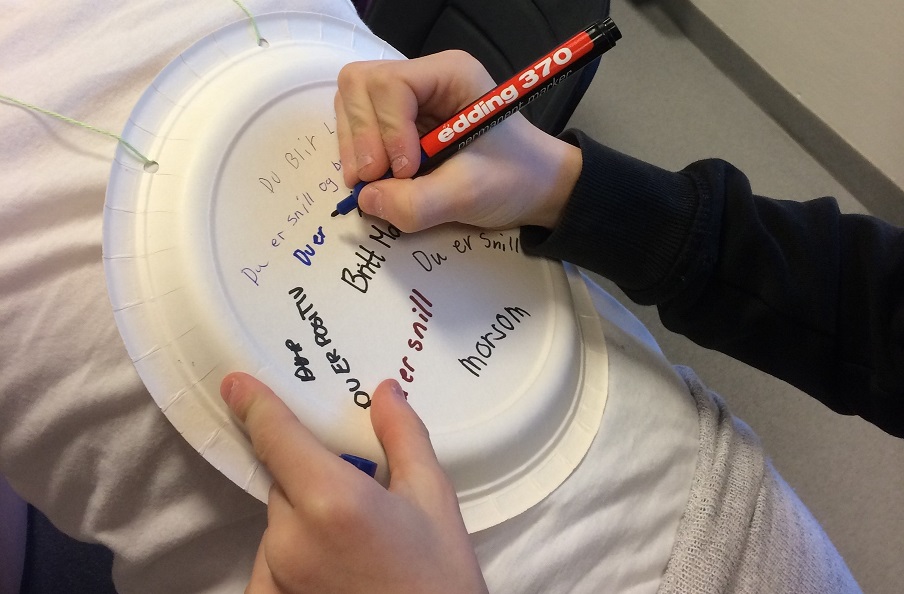
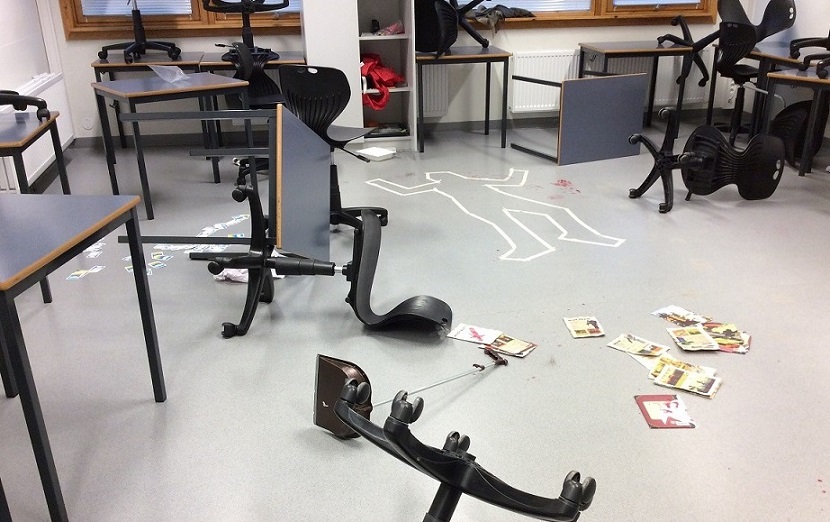
“I think it is important for pupils to use different skills in their learning process and I always ask my pupils in what way they would like to learn and how they want to do it. They come up with a lot of great ideas we often use in the lessons. It could be suggestions like:
-a book, an article, a film, local news, a dilemma, gaming, good/bad choices they want to discuss/work with
-make reading castles in the classroom (group work)
-arts and crafts tasks to process the content of a book or film or as pre-work of what we are working with
-invite younger pupils to the classroom where they read aloud for them or make stories together
-make a School Parliament for discussions
-make and use “walk and talk”-cards during and after reading a book or discussing something
-Theme weeks
-creative writing tasks such as making a graphic novel, a poster, quotes, poems and on….”
Much food for thought here!